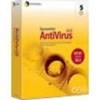Symantec 11281411 Administration Guide - Page 150
Updating NetWare servers using the Virus Definition, Transport Method, Source
 |
UPC - 037648327237
View all Symantec 11281411 manuals
Add to My Manuals
Save this manual to your list of manuals |
Page 150 highlights
150 Updating virus definitions files Updating virus definitions files on Symantec AntiVirus servers 4 In the Configure Primary Server Updates dialog box, click Source. 5 In the Setup Connection dialog box, in the Update definition file via list, click Another Protected Server, and then click Configure, if necessary. 6 In the Configure Update From Server dialog box, select the master primary server from the list of servers that appears. 7 Click OK. 8 Click OK. 9 In the Configure Primary Server Updates dialog box, do one of the following: ■ Click Update Now to retrieve the virus definitions files from the master primary server immediately. ■ Click Schedule For Automatic Updates, and then click Schedule and set a frequency and time when the server will check for updates on the master primary server to schedule automatic updates. 10 Click OK until you return to the Symantec System Center main window. Updating NetWare servers using the Virus Definition Transport Method Updating a NetWare server is similar to updating other types of servers with the following differences: ■ You can designate a NetWare server as the primary server for your network, or designate a Windows NT/2000 computer as the primary server. If your NetWare servers are running on faster computers or have a higher bandwidth connection than your Windows NT/2000 servers, you can designate a NetWare server as a primary server for increased performance. ■ NetWare primary servers must have TCP/IP and FTP running (FTP is not enabled by default on NetWare servers), and must be able to connect to the Internet. In addition, NetWare environments require a Windows NT/2000 computer to run the Symantec System Center console. ■ NetWare servers do not store the addresses of Windows NT/2000 servers in their address caches. As a result, if your NetWare server is not running TCP/ IP and is not using a domain naming system (DNS) server, you might have difficulty updating a NetWare server from a Windows NT/2000 server that resides in a different server group.















